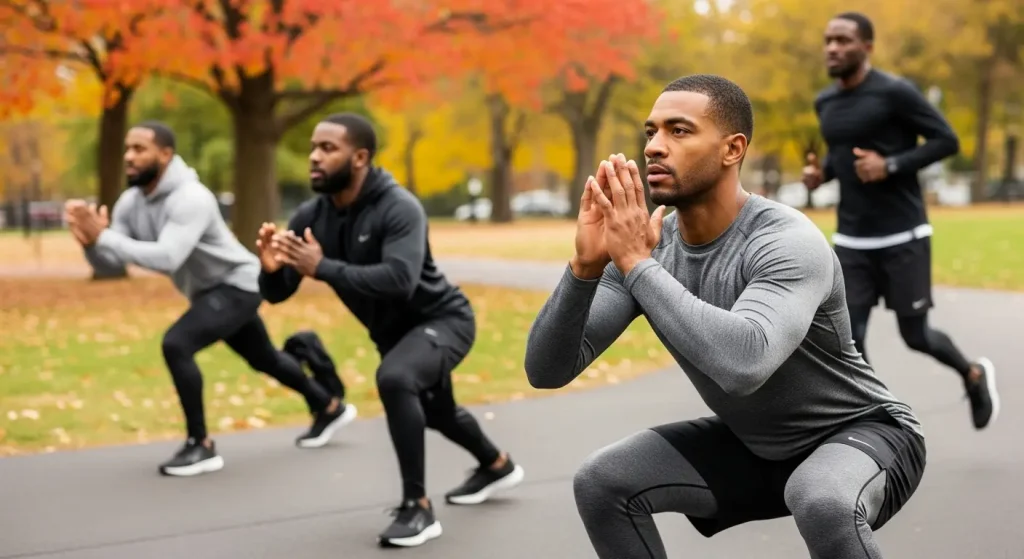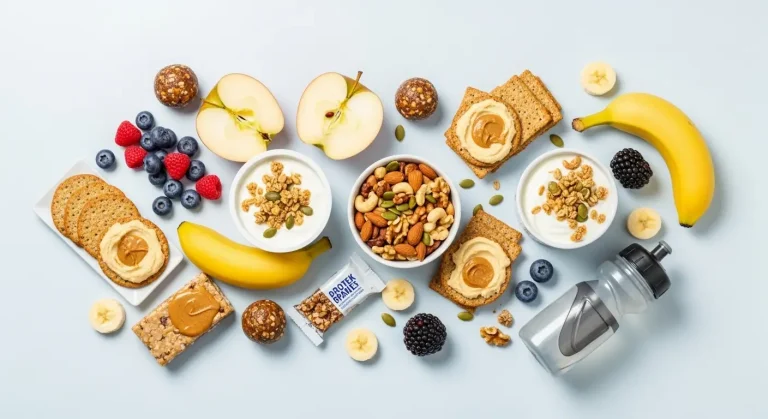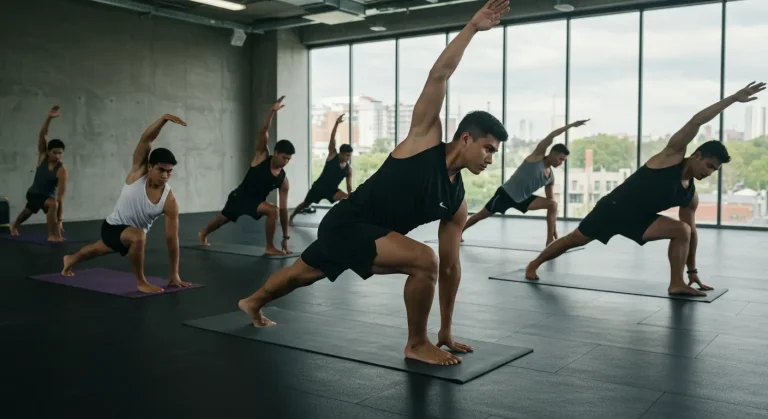When the season comes to an end, many athletes find themselves wondering how they can maintain their fitness and avoid losing all the progress they’ve made. Whether you’re a professional athlete or just someone who enjoys staying fit, the offseason can be a challenging time to stay on track. The good news is, it’s possible to stay active and continue to progress without being in full competition mode.

In this article, I will share practical strategies that can help you stay fit during the offseason, ensure you don’t lose progress, and even improve in areas that might have been neglected during the main season. By maintaining a balanced approach and focusing on key areas of fitness, you can come out of the offseason stronger than ever.
Why Is It Important to Stay Active During the Offseason?
The offseason is often seen as a time for rest and recovery. However, taking complete time off can lead to significant setbacks in strength, endurance, and overall fitness. Without some form of activity, you risk losing the conditioning that you’ve worked hard to build up over the season. Additionally, a period of inactivity can also lead to muscle atrophy, reduced cardiovascular health, and mental fatigue.
Staying active during this period isn’t about pushing yourself to peak performance, but rather maintaining a base level of fitness and setting the foundation for the next season. Maintaining activity helps preserve muscle mass, cardiovascular health, flexibility, and mental well-being, all of which will set you up for success when you return to your regular training schedule.
How Can I Stay Active During the Offseason?
Maintaining a fitness routine during the offseason doesn’t mean you have to do the same activities you did during the competitive season. In fact, this is the perfect time to mix things up and focus on different aspects of your fitness that might not get enough attention during regular competition or training.
Focus on Recovery and Mobility
One of the most effective ways to stay active during the offseason is by incorporating recovery and mobility exercises into your routine. Stretching, yoga, and foam rolling can significantly improve your flexibility and help prevent injuries when you return to intense training. It’s also an opportunity to work on range of motion, which is often neglected during the season when you’re focused on performance.
- Yoga and Stretching: These can help increase flexibility and reduce tightness from previous intense training.
- Foam Rolling: Foam rolling reduces muscle tension and improves blood flow, promoting faster recovery and muscle health.
Cross-Training for Variety and Endurance
Offseason training offers a great opportunity to try something different from your usual sport. Cross-training can help you maintain cardiovascular fitness while reducing the risk of overuse injuries.
- Swimming: Excellent for low-impact endurance training, swimming engages the entire body and is great for improving cardiovascular health without straining joints.
- Cycling: Cycling is another low-impact activity that provides a great cardiovascular workout and helps maintain leg strength and endurance.
- Hiking or Trail Running: These activities can improve leg strength, balance, and mental resilience, all while enjoying the outdoors.
By mixing up your activities, you’re not only keeping things interesting, but you’re also engaging different muscle groups that might not be used in your regular sport.
Strength Training to Maintain Muscle Mass
While the offseason isn’t a time to push for personal bests, strength training remains crucial to maintaining muscle mass and strength. By focusing on functional movements and lighter weights, you can keep your muscles engaged without risking burnout or injury.
- Bodyweight Exercises: Push-ups, squats, and lunges can help maintain muscle tone and strength with minimal equipment.
- Resistance Training: If you have access to weights, perform compound exercises like deadlifts, bench presses, and rows to maintain your strength.
The goal is not to overtrain but to maintain strength levels, ensuring that when the season begins again, you don’t have to start from scratch.
Active Rest and Recovery
Rest is just as important as training, and the offseason is an excellent time to focus on recovery. Incorporating rest days into your routine is essential to give your body time to repair and recharge. During these periods of active rest, consider engaging in activities like:
- Walking: A light walk can help you stay active without putting too much strain on your muscles.
- Massage or Cryotherapy: These techniques can promote faster muscle recovery and reduce soreness, preparing your body for when you resume more intense training.
Learn to Enjoy Sports Even If You’re Not Great at Them
Nutrition and Hydration
Maintaining good nutrition and staying hydrated are key to staying active and preserving your progress. During the offseason, it’s important to fuel your body with nutrient-dense foods that support recovery and overall health. Keep an eye on your macronutrient intake, including protein to support muscle repair, carbohydrates to replenish energy stores, and fats for joint and brain health.
- Protein: Helps in muscle repair and maintaining muscle mass.
- Healthy Fats: Support brain function, joint health, and hormonal balance.
- Hydration: Water helps maintain hydration levels, especially when you’re still engaging in physical activities.
A balanced diet and proper hydration ensure your body stays fueled and prepared for any offseason activity.
Should I Set New Goals During the Offseason?
Yes! The offseason is an ideal time to focus on goals that may not be directly related to your main sport but can help improve your overall fitness. Setting these new objectives will keep you motivated and engaged, allowing you to track progress in areas that are important for long-term development.
- Flexibility Goals: Setting a goal to improve your flexibility through consistent stretching or yoga.
- Core Strength: Working on strengthening your core, which is essential for injury prevention and overall athletic performance.
- Endurance: Improving cardiovascular endurance through activities like cycling, swimming, or running can enhance stamina for your primary sport.
Explore details about Leah Ray XXBRITS.
Real-Life Example: Staying Active During the Offseason
Let’s take the example of a marathon runner. During the offseason, they might focus less on running long distances and instead incorporate activities like swimming, cycling, or yoga into their routine.
While swimming provides a low-impact way to maintain cardiovascular fitness, yoga can improve flexibility, preventing injury when running resumes. In this way, the runner stays active, maintains their fitness, and addresses other areas like mobility and recovery that are often overlooked.
How Do I Stay Mentally Engaged During the Offseason?
Staying active isn’t just about physical fitness—it’s also about mental engagement. The offseason can sometimes lead to burnout or a lack of motivation. To keep your mental game sharp, consider the following strategies:
- Set Small Milestones: Track your progress by setting achievable fitness goals and celebrate small wins along the way.
- Stay Connected to Your Sport: Watch games, follow training tips online, or engage with a community that shares your passion to keep your interest alive.
- Mental Training: Incorporate mental training techniques like visualization or mindfulness to stay focused and motivated.
Visit PedroVazPaulo Consultant Homepage for more tips.
Conclusion
Staying active during the offseason doesn’t require pushing yourself to the limit, but it does require consistency and variety. By focusing on mobility, cross-training, strength maintenance, and mental engagement, you can ensure that you stay in shape and don’t lose the progress you’ve made. Remember, the offseason is about recovery and preparation, setting the stage for an even more successful and injury-free season ahead.






